Sensor Sweep: Nephilim RPG, Gardner F. Fox, H. Rider Haggard
Monday , 19, May 2025 Sensor Sweep Leave a commentWeird Tales (Tellers of Weird Tales): Nictzin Dyalhis (1873?-1942)had his first story in Weird Tales in April 1925. So did Donald Edward Keyhoe (1897-1988). Dyalhis’ story was of course “When the Green Star Waned,” a science-fantasy set in the solar system of the future. Keyhoe’s story was “The Grim Passenger,” a tale of Egyptian archaeology and a pharaoh’s curse. “The Grim Passenger” is, then, about the past.
Publishing (Kairos): New authors still fall for it. The lavish promise of landing a contract with a Big Five publisher—Penguin Random House, HarperCollins, Macmillan, Hachette, or Simon & Schuster—remains tantalizing bait for aspiring writers. But like the dream of becoming a movie star or a rock god, the trope of the “standard rich and famous” book deal is a relic of the now long-gone twentieth century.
Conan (Sprague de Camp Fan): REH’s and Conan’s popularity were at their apex when de Camp was the steward of Conan. REH’s other characters like Kull, Solomon Kane, and Bran Mak Morn were published in mass-market paperbacks. They were on shelves side by side with Conan. But eventually non-Conan books petered out. One of the last “Howard Boom” era paperbacks (that blazoned “by the creator of Conan”) was The She Devil, Ace Books, 1983. Read More
de Camp was the steward of Conan. REH’s other characters like Kull, Solomon Kane, and Bran Mak Morn were published in mass-market paperbacks. They were on shelves side by side with Conan. But eventually non-Conan books petered out. One of the last “Howard Boom” era paperbacks (that blazoned “by the creator of Conan”) was The She Devil, Ace Books, 1983. Read More
Science Fiction and Fantasy New Releases: 17 May 2025
Saturday , 17, May 2025 Uncategorized Leave a commentEvery week, the Castalia House Blog spotlights some of the many new releases in independent, pulp, and web novel-influenced science fiction and fantasy.
Escape the past or protect the future?
Treylen and his dragon, Rime, have left the assassin’s life behind them. Now, ambassadors to far-off lands, they’re ready to settle down and take it easy.
Old habits die hard, though. Treylen makes a dangerous promise—to teach the king’s daughter to bond with a dragon of her own. To do it right, she must put aside her royal ego and survive the deadly training. And the whole city is watching their every move. If Treylen succeeds, he will have a powerful ally in the war. If he fails, the alliance is broken.
When things go awry, Rime and the princess gamble on a plan of their own, launching a quest to the hellcaves, where horrors lurk and lost secrets await.
For the others, this is the journey of a lifetime. For Treylen, it’s just nice to be out of the public eye. But, nothing ever goes to plan. When old friends come knocking and enemies show up in the most unexpected places a hidden plot will unfold, and a race against time will begin.
Which bonds will be broken? Which will be reforged? And what dark histories will be uncovered in the bowels of pentearth?
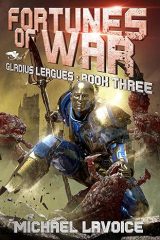 Fortunes of War (Gladius Leagues #3) – Michael LaVoice
Fortunes of War (Gladius Leagues #3) – Michael LaVoice
Defrocked, disgraced, and desperate, the Warhawks are humanity’s last hope. But first, they’ll have to survive their own allies.
Foundry has been saved, but humanity’s war effort is in shambles. The Solarian Planetary Council needs someone to blame, and they’ve found their scapegoat: the Warhawks.
Nick “Warhorse” Landry, once the fearless leader of the Warhawk Battalion, has been forced out of the fight—until his team walks out in protest, refusing to leave him behind. But the real threat is at Earth’s doorstep: the alien Onslaught is closing in, faster than anyone expected.
Branded as traitors, hunted by former allies, and stalked by a god-like AI that once tried to wipe out humanity, the Warhawks must now navigate a deadly race against time. Their mission: save Earth from destruction in an all-out running battle through the streets of LA. While the fate of humanity hangs in the balance, Warhorse has a secret weapon that could end the war… but only if he survives long enough to use it.
Will Warhorse and his team stop the Onslaught in time?
Captain Mike Sandhurst and the 157th Tank Regiment have redeployed to Mars and are stuck in unrealistic training environments designed by those without combat experience and frustration mounts.
Lieutenant Vivian Llewelyn’s Thunderbolts find themselves in a similar situation compounded by their newly assigned Commander Air Group. The loss of the planet Haven speeds the creation of Task Force Victory, combining armored ground forces and dedicated air support, but not before a devastating accident shakes the Thunderbolts to their core.
After a brazen, unprovoked attack on a critical Earth colony planet, Earth Maneuver Forces are without their second largest logistical hub and must respond in force. Task Force Victory deploys forward to the Haven system and a mysterious, barely hospitable planet named Honalee. Given the mission to take and hold a massive island named Paradise, Sandhurst and his friends discover the alien world, while capable of supporting life, is a very dangerous place. Confronted by a dedicated enemy force, complete with a newly discovered variant they name a Brute, Task Force Victory must overcome all of the challenges to establish a beachhead on the island and press the attack forward.
Will Sandhurst and Llewelyn succeed in bringing their units together to take Paradise, and what mysterious secrets are to be found there? What happens when the Task Force gets the attention of the rest of the galaxy? Read More
Cinema (Art of the Movies): We all love rooting for our screen heroes but they would be nothing without a great villain to go up against. Here is the second half of our countdown of forty of the finest.
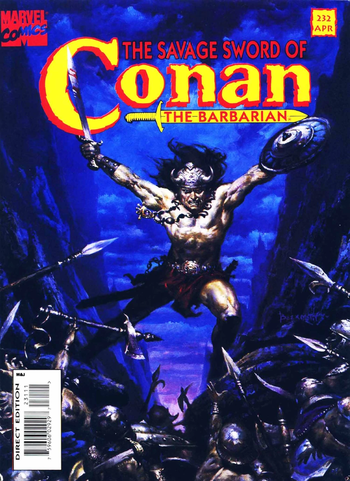
Comic Books (Conan Chronology): I detailed in “How Conan Conquered the Comics Code” how The Savage Sword of Conan came to life in the space left open by a revised Comics Code Authority to become an unlikely Bronze Age hit. Savage Sword would go on to become one of the greatest 1970s creations for Marvel and one of my favorite comic books of all time.
Weird Tales (Dark Worlds Quarterly): Parasite Mansion” (Weird Tales, January 1942) by Mary Elizabeth Counselman is probably her most famous story. Counselman began publishing gentler ghost stories in 1933 for Farnsworth Wright but this story is a later one for Dorothy McIlwraith. MEC is one of a group of brilliant women who penned creepy tales for the Pulps. Counselman describes her work in This Is a Thriller (2004) :
Fiction (DMR Books): In 2020 DMR Books made arrangements to reprint Manly Wade Wellman’s final novel, Cahena, bringing it back into print for the first time in nearly thirty-five years. The contract is expiring soon, and at the end of May it will once again be unavailable.

Pulp (Comics Radio): “The Game,” published in the January 10, 1926 of Adventure, is a fun tale. It involves an American army captain stationed in California. He’s held in disdain by the rich Mexican ranchers who live in the area. This becomes a problem when he falls in love with the daughter of one of those ranchers.
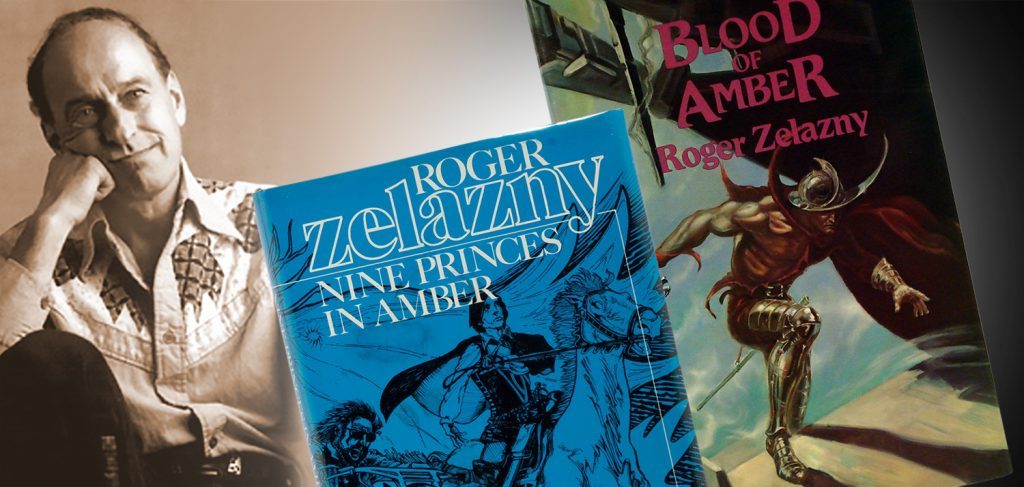
Authors (Goodman Games): By virtue of his unusual last name, Roger Zelazny is last in Appendix N. And so, around the anniversary of his birth, let’s take a look at this three-time Nebula Award winner (nominated 14 times), six-time Hugo Award winner (coincidentally, also 14 nominations) and “last-but-by-no–means-least” author, focusing on his best-known work: The Chronicles of Amber.
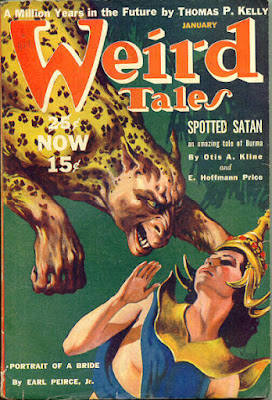
Weird Tales (M Porcius): The classic run of Weird Tales was from 1923 to 1954 and there is no reason to refrain from extending our project backwards and forwards. So today let’s check out some stories from the penultimate issue of Weird Tales edited by Farnsworth Wright, the January 1940 ish.
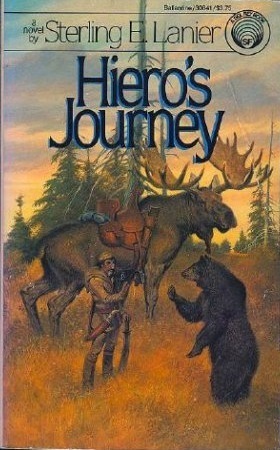
Fiction (Skulls in the Stars): This one caught my eye a while back while I was browsing my favorite vintage gaming store site, Wayne’s Books, and after a few moments of hesitation, I had to snap it up! The book is Hiero’s Journey (1973), by Sterling E. Lanier, and my copy is a 1983 edition.
Robert E. Howard (The Silver Key): How do you review a new Robert E. Howard biography? Perhaps with the question: Do we need a new Howard biography? After all, we have two major works already: L. Sprague de Camp’s Dark Valley Destiny and Mark Finn’s Blood and Thunder. There are others too, which I have not read and cannot comment on: David C. Smith’s Robert E. Howard: A Literary Biography.

Pulp (SFF Remembrance): My question then is, if I’m not gonna continue my review of Triplanetary, what could I use as a substitute for the rest of the month? There were many options; as you probably know, a lot of novels and novellas were serialized in three installments. But for me the answer was obvious: I’d be returning to Robert E. Howard.

Fiction (Vintage Pop Fiction): Cornell Woolrich’s Rendezvous in Black was published in 1948. Woolrich’s particular genius is that his stories were so perfectly adapted to film adaptation. Very few writers have had more stories adapted for film and TV and that made him a crucial figure in the history of pop culture. And it turned out to be almost impossible to make a bad movie from a Cornell Woolrich story.

Conan (DMR Books): I think about the Hyborian Age a lot. Maybe not quite as much as the Roman Empire, but more than ‘now n’ then’. I’ve been a student of Hyborian Age cartography since I was barely a teenager. The same goes for Hyborian Age lore, only that goes even further back. Here is something that I noticed quite few years ago, but have never commented on:
History (Jack Carr USA): THE UNVANQUISHED pulls back the curtain on a little-known shadow war that raged alongside the Civil War’s better-known battles. At its center: Lincoln’s special forces, the Jessie Scouts—Union soldiers who disguised themselves in Confederate uniforms to carry out daring raids, intelligence gathering, and high-risk missions behind enemy lines.
Cold Steel (Schola Gladiatoria): The Hittite Empire was incredibly powerful and feared in its time, and famously gained several large victories over the Egyptians. However, is it true that one of the secrets of their successes were their iron sword technology?
James Bond (MI-6 HQ): Jarvis & Ayres’ tenth James Bond dramatisation for Radio 4. The 1953 spy thriller – the first and most famous of all Ian Fleming’s novels. With a devastating final twist.
The mysterious Le Chiffre works in France as undercover paymaster of a communist-controlled trade union. He’s embezzled union funds and lost the lot. His plan – recoup the money at the gambling tables of Casino Royale, Northern France.

Fiction (George Kelley): I read plenty of Chris Offutt’s father’s SF and Fantasy novels growing up. Andy Offutt was a prolific writer and his son is certainly following in his footsteps with the Mick Hardin mystery series. I read and reviewed the first two books in the series–The Killing Hills and Shifty’s Boys–a few years ago (you can read my reviews here)
T.V. (Critical Drinker): From pride flags to ridiculous fight scenes to Ellie becoming a “dad”, Last Of Us has become a sad joke of a show.
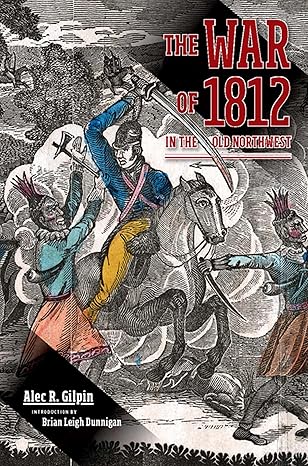
History (Marzaat): The War of 1812 has a dim place in American memory: the burning of the White House, the writing of “The Star-Spangled Banner”, and the irrelevant Battle of New Orleans. The theater of the war covered by this book — roughly Lake Erie, the Great Lakes to the west of it, and the Ohio and Mississippi River valleys
Crime Fiction (Crime Reads): I’ve never forgotten what John Huston wrote about the work of W.R. Burnett—“There are moments of reality in all those books that are quite overpowering. More than once they had me breaking into a sweat.” When I think of the crime novels of Charles Williams, I know exactly what he means.
History (MSN): Countries of the world had thousands of years of history that preceded the territory’s discovery, putting it on the map. The United States of America was one such nation, the discovery of which was credited to Christopher Columbus. However, the find of Venetian glass beads in Alaska attested to a trade before the arrival of Columbus.
Weird Tales (Dark Worlds Quarterly): I have found August Derleth’s work fascinating, even without the Lovecraft connection. He wrote over a hundred stories for Weird Tales. There are very few authors who can claim more — only Seabury Quinn. (For more on the most prolific writers in WT, go here.) Quinn and Derleth share more than big numbers. Both were fans of classic Horror authors and knew a thing or two about occult matters as a source for stories.
Fiction (Cabinet Obscura): The original manuscript of Robert W. Chambers’ “The Harbour-Master” surfaced recently at the New York International Antiquarian Book Fair, and the news brought back a memory of the strange creature — half man, half fish — encountered in the story.
Fiction (Skulls in the Stars): I definitely underestimated Francis Stevens on this one. Stevens was the pseudonym of Gertrude Barrows Bennett (1884-1948), an author of fiction that now tends to fall under the label of “dark fantasy.” Quite a long time ago, I read a complete collection of her short fiction and followed up with her 1920 novel Claimed!, about a man who stubbornly refuses to return the possession of a dark power of the seas.
Fiction (Marzaat): As you would expect from Wollheim, this is a very science fictional weird story. It opens by noting how relatively recent our understanding of physics, chemistry, and geography is. Nuclear physics is still developing.
Science Fiction and Fantasy New Releases: 10 May 2025
Sunday , 11, May 2025 Uncategorized Leave a commentEvery week, the Castalia House Blog spotlights some of the many new releases in independent, pulp, and web novel-influenced science fiction and fantasy.
On the run and out of time…
Everything changed back in Crescent City when Crowley made his choice to stand up to his angelic handler Shargrafein. It was either her or Rosa, and the choice was clear. Now, there’s no going back.
Something about Rosa has everyone scrambling—a hidden power. It’s up to Crowley to bring her back to land of the living, and discover exactly what she is. Only then might they have a chance against the forces of Heaven and Hell, both of whom want her for their own devices.
So what if that makes him a traitor to the White Throne? They kept the truth about her from him. Made him a pawn in their endless war.
But those above and below aren’t the only ones after Crowley and Rosa. An old rival has resurfaced and he’s out for vengence, no matter what takes.
If they hope to evade capture, Crowley will need to trust old friends and allies. And trust doesn’t come easy to a man shot to death by his own boss.
After “Happily Ever After” Comes “Until Death Do You Part.”
One is a predator.
The other’s a vampire.
They’re a match made in Heaven.
They need to make it to the church on time.
And God help anyone who gets in their way.
Something has been hunting Marco and Amanda before they were married. It has stalked them across the country. It sits in the dark, hiding in the shadows.
The two of them need a plan to drag the monster into the light. They need bait … and they may be it.
It’s time to hunt the darkness down, once and for all.
Before Conan, before Solomon Kane, Robert E. Howard was going toe-to-toe with roughnecks at the local icehouse-trading blows with oilfield bruisers, seasoned pros, and anyone gutsy enough to step in the ring. Around town, folks called him Bob. In the ring, they called him unbeatable.
Fists of Iron – Round 1: The Ultimate Edition is the explosive first volume in a four-part series collecting Howard’s boxing fiction, poetry, fragments, and articles. These are not just boxing stories-they are tributes to endurance, raw power, and the blood-and-sweat brotherhood of the ring. Written by a man who trained, fought, and knew the pain and glory of every round, these tales are laced with wit, grit, and a deep respect for the fighting spirit.
This edition includes not only fully restored texts from Howard’s original typescripts and carbons-sourced from archives such as the Glenn Lord Collection and the Cross Plains Library-but also rare material such as newspaper articles, unfinished stories, alternate versions, and poetry that captures the atmosphere of smoky gyms and roaring crowds.
Inside you’ll find pulp classics like “The Spirit of Tom Molyneaux,” “Iron Men,” and “The Voice of Doom,” plus little-seen gems like “Dula Due to be Champion” and “Tunney Can’t Win.” Read More
Weird Tales (Tellers of Weird Tales): The illustration on the cover of Weird Tales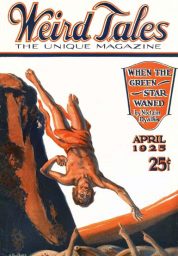 for April 1925 is for “When the Green Star Waned” by Nictzin Dyalhis. The artist was Andrew Brosnatch. It shows a man who appears to be falling into a mass of aliens that have invaded Earth. In actuality, the aliens have levitated him the way a Roman might hold a grape over his open mouth. The intent is the same: the aliens mean to eat him.
for April 1925 is for “When the Green Star Waned” by Nictzin Dyalhis. The artist was Andrew Brosnatch. It shows a man who appears to be falling into a mass of aliens that have invaded Earth. In actuality, the aliens have levitated him the way a Roman might hold a grape over his open mouth. The intent is the same: the aliens mean to eat him.
Games (The Rageaholic): Let’s Talk About Battletech ‘Gothic’.
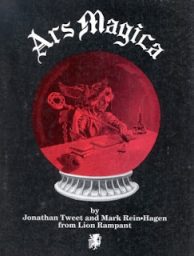 RPG (Grognardia): Of these, the one that immediately stands out in my memory is Ars Magica, released in 1987 by Lion Rampant, a small outfit co-founded by Jonathan Tweet and Mark Rein-Hagen, two designers who would later leave a lasting mark on the hobby. Read More
RPG (Grognardia): Of these, the one that immediately stands out in my memory is Ars Magica, released in 1987 by Lion Rampant, a small outfit co-founded by Jonathan Tweet and Mark Rein-Hagen, two designers who would later leave a lasting mark on the hobby. Read More
Science Fiction and Fantasy New Releases: 3 May 2025
Sunday , 4, May 2025 Uncategorized Leave a commentEvery week, the Castalia House Blog spotlights some of the many new releases in independent, pulp, and web novel-influenced science fiction and fantasy.
Suit up and move out.
Ten years after saving humanity from the Thephari threat, legendary MOCOM instructor Titus Briggs discovers his elite pilots are failing against an enemy that’s learned their weaknesses.
When a grizzled Ranger Staff Sergeant with uncanny tactical brilliance reminds Briggs of his own infantry roots, they forge an unlikely alliance that challenges the technological superiority the MOCOMs have come to rely on.
With time running out to stop a devastating anti-MOCOM weapon from deployment, Briggs must remember who he was before the machines—a soldier who succeeded not because of technology… but despite its absence.
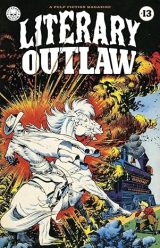 Literary Outlaw #13 – edited by Literary Outlaw Press
Literary Outlaw #13 – edited by Literary Outlaw Press
Literary Outlaw is a modern pulp fiction magazine featuring both original fiction as well as classic stories and comics from the public domain.
This issue includes classic stories by Mark Twain, H.P. Lovecraft, Hergé, a serialized novel by Booth Tarkington, and 30+ pages of uncanny comics!
In This Issue:
- Personal Recollections Of Joan Of Arc by Mark Twain
- Ghost Rider: The Blasts Of Doom! by Gardner Fox & Dick Ayers
- Legendarium II: The Wrath Of Bob by Michael Bunker & Kevin G. Summers
- Black Cat: Black Magic by Lee Elias
- Penrod And Sam by Booth Tarkington
- Tintin In The Land Of The Soviets by Hergé
- Medusa’s Coil by Zealia B. Bishop & H. P. Lovecraft
- Escape From Hell by Author Unknown
- An American Epic by Robert E. Howard
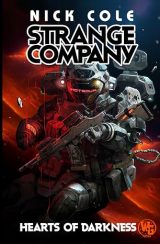 Strange Company #3 – Nick Cole
Strange Company #3 – Nick Cole
Caps to pop and bodies to drop.
As intergalactic civilization collapses and descends into chaos, the Strange Company must journey to the edge of human-controlled space to board and destroy the last ship of the corrupt Monarch Empire–in order to both satisfy a debt and salvage what remains of their reputation as hard-bitten and dangerous private military contractors.
But things are never easy for mercenaries. Plots to kill one of them abound, eccentric warrant officers are running amok–when they can be found– and a bad case of serious PTSD about what lies ahead for Sergeant Orion plagues his waking nightmares as the Cult of Hot Soup grows. The company must “get gud” or die trying as they master boarding operations and prepare for the worst kind of combat a space marine can get their kill on in: compartment-to-compartment fighting on a ship so advanced in technology, it’s almost… alien.
Stinkeye, Hauser, Chief Cook, Sergeant Orion, and new and old Strange Company brothers are here for the violence with a ticket to ride the lightning and settle accounts with the fallen tyrants as they get their stack on and get paid. If they can make it back to their ship and a safe world beyond the limits of the known, then perhaps the company can avoid the tragedy they’ve been sucked into.
The only way out lies beyond a praetorian guard of heavily armed commandoes, emplaced guns, and enigmatic psy-powered operators. The Heart of Darkness waits at the Oblivion Gate, for the Strange Company to make one wrong move and disappear forever.
Lieut. Gullivar Jones: His Vacation by Edwin Lester Arnold
Thursday , 1, May 2025 Fiction Leave a commentThis is a guest post from Richard:
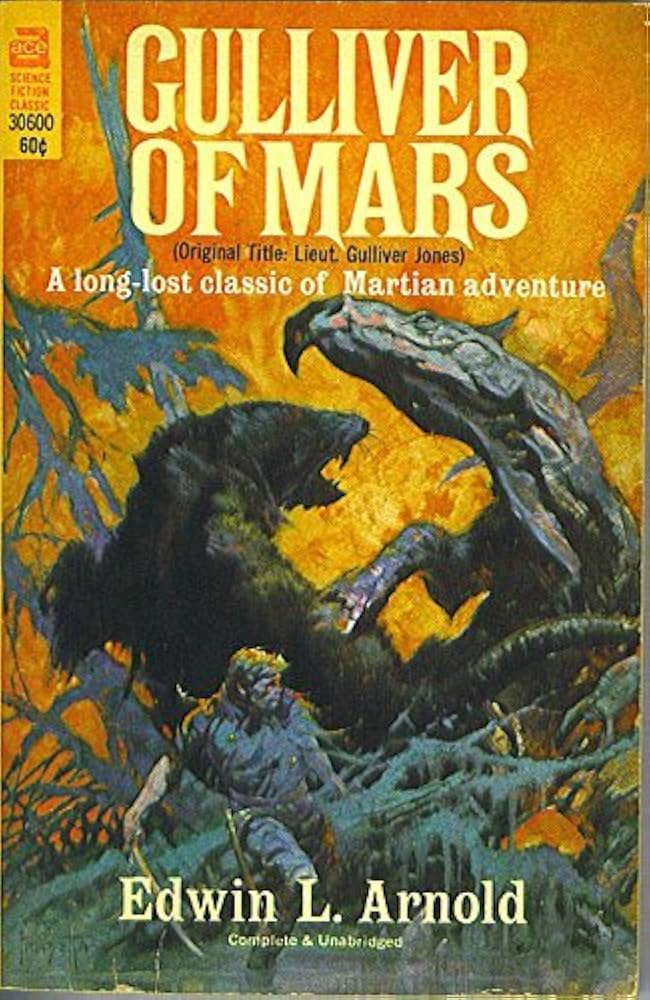
“In short, I am an ignoramus, but pretty well for a yeoman.”
This testament of John Ridd, delivered at the outset of R D Blackmore’s LORNA DOONE, could be accorded to Gullivar Jones. The eponymous hero of Edwin Lester Arnold’s planetary adventure of 1905. And with equal justification.
A bluff oafish naval lieutenant, Jones is neither particularly bright nor overly perceptive. His outlook on life is distinctly short-term. And while he is brave enough, his courage is of the dogged rather than dashing variety. All told, an unprepossessing sort of hero when reduced to brass tacks.
That being said; for anyone with an appetite for the “simple tale told simply” a more affable, engaging, convivial and amusing narrator one would be hard pressed to find. And this remains the book’s saving grace. Because the story which Jones is obligated to tell is an absurd concoction of contrivances, conveniences, and coincidences. One which ultimately collapses into full blown melodrama.
Traipsing the streets of New York one night, a disgruntled Gully Jones witnesses the crashing to earth of a flying carpet. From this is disgorged a swiftly expiring occupant. Who he is, and from whence he comes we never learn [one of several narrative cul-de-sacs]. Because shortly afterward an ill-considered wish, expressed whilst stood upon the carpet, results in Jones being transported to Mars. Read More
Sensor Sweep: Sword & Sorcery, Forgotten Realms, Tolkien, Frazetta
Monday , 28, April 2025 Sensor Sweep Leave a commentRobert E. Howard (Jose’s Amazing World of Fantasy): Join us for an exclusive live interview with Willard M. Oliver, acclaimed author and scholar, as we dive deep into his latest biography, Robert E. Howard: The Life and Times of a Texas Author.
Weird Tales (Tellers of Weird Tales): Early on there must have been authors who showed real promise. For example, Canadian author Julian Kilman (1878-1954) had five stories in the first year of Weird Tales. Readers never heard from him again. They loved “Invaders from Outside” by J. Schlossel (Joseph H. Schlossel [1902-1977]), published in the January issue of 1925. But Schlossel had just two more stories in Weird Tales, in 1925 and 1926.
Cinema (Akkad Daily): Look at What They’ve Done to the Predator Read More
Science Fiction and Fantasy New Releases: 26 April 2025
Saturday , 26, April 2025 Uncategorized Leave a commentEvery week, the Castalia House Blog spotlights some of the many new releases in independent, pulp, and web novel-influenced science fiction and fantasy.
A Nation divided. An endless civil war. A pilot who can end it all.
Newly graduated EngineMaster Dawn Fletcher is eager to take the fight to the rebel Islanders alongside her clan-mates. But when tragedy strikes, she has no choice but to team up with the proud, stubborn Cal Bassoli, a veteran Pilot who is no stranger to pain and loss.
With no time to prepare before the next Islander attack, Dawn and Cal must quickly set aside their differences and learn to trust one another if they want to master their battle engine, survive the engagement, and perhaps even discover what the Islanders are really up to.
If they fail, it could spell disaster for the entire Nation.
Somewhere in the universe, a forgotten starship is waiting.
Drake steals artifacts so they can benefit all of mankind. They belong in a museum, after all, not hoarded by a select few in their private vaults. It’s a dangerous life, but someone has to do it.
Then he learns of a map to the location of a lost mega-freighter once belonging to the ancient royal family. Drake, like so many before him, can’t resist the siren’s call. After all, it’s the find of a lifetime.
All he needs to do is steal the map, right?
Except nothing is ever easy for Drake. The map is housed inside a super vault, surrounded by guards ready to shoot on sight, and now there’s a woman with an eyepatch and a vendetta. And all of that could end up being the easy part.
Getting the ship and keeping it will be much more difficult.
Experience a riveting, brand new science fiction saga from USA Today Bestselling Authors J.N. Chaney and Terry Mixon. If you’re a fan of the Last Hunter, Renegade Star, or Backyard Starship, you’ll love this tale of science fiction intrigue, galactic exploration, and unfathomable discovery.
A regression ritual gone wrong. A mage reborn in an ancient era. A world to rebuild.
Kai of the Sorcerer’s Tower was one of the last Mages left, barely surviving in a world contaminated with dead mana and ruled by creatures of the dark.
To save his world and fulfill his master’s last wish, he puts himself through a forbidden ritual, risking his soul being ripped into pieces to make his way into the past, to a golden era with abundant mana.
But things go wrong. He overshoots and finds himself in an ancient time thousands of years earlier, within the body of a young lord named Arzan.
All is not well, though. The young lord was murdered by mysterious forces before Kai took over, beasts are rampant, and even larger threats loom on the horizon.
There’s a lot to do for Kai to regain his former strength in this time of primitive technology. Then again, he might just be able to change that and makes things even better than they ever were.
Meet Ed Race who made his trade as a vaudeville gun-juggler supreme, known on stage as “The Masked Marksman” and for handling six loaded .45s to the delight of the crowds. But when this line of work became too tedious, Race took advantage of his multi-state P.I. licenses to solve crimes across the country. This collection includes :
- Murder Misses Its Cue: Those Jordane killers set out to ruin Blountsville’s first citizen, and kill his only son, to boot, but overlooked one little detail. Ed Race, the Masked Marksman, was performing hair-trigger tricks at the local theater-and was more than willing to give those thugs a command performance!
- The Corpse Takes a Curtain Call: As the Masked Marksman, on the stage, Ed Race had been called upon to perform miracles with his .45s-but none as hair-raising as the time, in real life, when he faced a killer who blasted men into eternity before he had even fired a shot!
- Top Billing for Murder: Ten thousand dollars was what “Lucky” Linsey planned to collect from a corpse’s check-until Ed Race, the Masked Marksman, horned in and canceled that check in hot lead!
Sensor Sweep: Robert Bloch, Flashing Swords, Dragonbane
Monday , 21, April 2025 Sensor Sweep Leave a commentEdgar Rice Burroughs (Walker’s Library): A Princess of Mars2 not only began on of Edgar Rice Burroughs’ many long-running series of adventure novels—alongside the Tarzan, Venus, and Pelludicar stories—but this one novel set a standard for fantastic adventure fiction that cast a shadow so long that many of you don’t realize that you’re standing in it.
Robert E. Howard (Frontier Partisans): Just discovered that there is a brand new biography of Robert E. Howard — a serious look at the writer who above all others inspired me to take up hammering on a keyboard. I am far from alone in that inspiration.
Pulp (Paperback Warrior): Crossen’s first published story may have been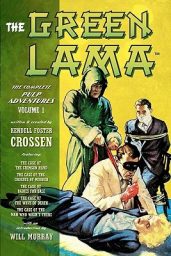 “The Killer Fate Forgot”, a western story written with Harry Levin that appeared in 10 Story Western Magazine in January 1938. Sometime in the late 1930s Crossen quit his editing job and moved to Florida. In 1939, he wrote three crime-fiction stories that appeared in Detective Fiction Weekly, one of which used the byline of Bennett Barlay. Crossen continued using the Barlay name in 1940 with four more stories in Detective Fiction Weekly. Read More
“The Killer Fate Forgot”, a western story written with Harry Levin that appeared in 10 Story Western Magazine in January 1938. Sometime in the late 1930s Crossen quit his editing job and moved to Florida. In 1939, he wrote three crime-fiction stories that appeared in Detective Fiction Weekly, one of which used the byline of Bennett Barlay. Crossen continued using the Barlay name in 1940 with four more stories in Detective Fiction Weekly. Read More
Science Fiction and Fantasy New Releases: 19 April 2025
Saturday , 19, April 2025 Uncategorized Leave a commentEvery week, the Castalia House Blog spotlights some of the many new releases in independent, pulp, and web novel-influenced science fiction and fantasy.
Fight. Heal. Survive.
The Integration didn’t just change the Earthen Union—it tore it apart. Monsters, mayhem, and madness turned civilization into a battlefield.
Yet, while the world crumbled under the weight of despair, David felt something unexpected: he felt at home.
Even after being forced into the [Cleric] Class, David refused to yield. He adapted, turning his unwanted gifts into tools of both healing and destruction, forging himself into a battle-hardened healer unlike any before.
Stranded thousands of light-years from home after a hyperspace experiment goes catastrophically wrong, General Connor Gates faces a brutal reality: their ship is failing, supplies are dwindling, and home is an impossible distance away.
Their only hope lies with a manipulative alien prisoner who offers a dangerous bargain. Freedom in exchange for guidance to an ancient outpost with technology that could save them all… or doom the galaxy if weaponized.
Every step deeper into uncharted space reveals new perils. The massive alien station they discover—a relic adrift in the void—hints at a universe far grander and more treacherous than humanity ever imagined.
Meanwhile, across the stars, a dormant threat awakens—silently calls to those who can hear it. The Vemus nearly exterminated humanity once. Their return could mean the end of everything.
As Connor races to unlock the station’s secrets before time runs out, he realizes the true danger may not be the vast emptiness of space, but what followed them into it. Some enemies are too dangerous to leave behind, even five thousand light-years from home.
In this gripping space epic, betrayal is almost certain, but survival demands risk. Ancient technologies beckon with salvation and ruin in equal measure.
Can humanity’s scattered defenders outsmart beings who think in centuries rather than moments?
A dangerous new fantasy world. A soldier in an eternal war. A champion rises.
Thrust into a new world filled with monsters and magic, Will’s life has become a war for survival. He has nothing more than a class called “soldier” and a strange leveling System he’s never seen before.
When he stumbles across a dying stranger, a mysterious questline activates.
Now Will must head to the front lines where humanity wages war against a ruthless Goblin Horde. There he will join the standing Kadian Army and forge his name from the fires of legend.
He’ll have to face goblins, hordes of the undead, cultists, and demons from Hell. And that’s just before breakfast…
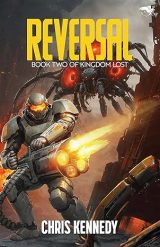 Reversal (Kingdom Lost #2) – Chris Kennedy
Reversal (Kingdom Lost #2) – Chris Kennedy
The lost children of King Kotaro are reunited!
Well, Hellen, Andrew, and Jayme are together again, although the fourth child—Jonatan—remains an unknowing captive of Duke Alessio Valente, who has unjustly usurped the throne after killing the previous king and queen.
Now, however, isn’t the time for them to take back the kingship, as the war with the Algarians still rages. Worse, the Kotaro children have discovered that the war previously was a sham arranged by Valente and the Algarian queen… but now, it’s very much for real, and the Algarians are making a concerted effort to destroy the Narantean Kingdom.
If the children try to recover the kingship now, it will only lead to a civil war that will ensure the downfall of the kingdom. The war must be won first, and the siblings have found a way to do so—a secret wormhole that will give them access to the Algarian domain.
Can the siblings take the group of mercenaries they’ve amassed behind the lines to hit the Algarians from behind and win the war? If they can’t, the kingdom and their lives will truly be lost forever! Read More
Sensor Sweep: Robert McGinnis, Solar Pons, Louis L’Amour, Erol Otis
Monday , 14, April 2025 Sensor Sweep 1 CommentNew (DMR Books): With the release of Swords of Steel IV right around the corner, authors from the book (along with myself) have recently made some appearances on podcasts to discuss it.
Art (Mystery File): Death Noted: Artist Robert McGinnis (1926-2025)
Robert E. Howard (Michael K. Vaughn): A New Robert E. Howard Biography!
Art (The Spy Command): Thunderball poster in 1965. The James Bond poster art by Robert McGinnis is from a different time, full of outrageous action and seductive women. Read More
Read More
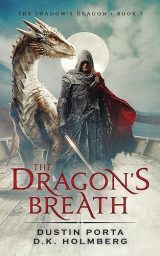 The Dragon’s Breath
The Dragon’s Breath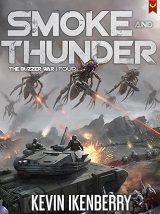 Smoke and Thunder
Smoke and Thunder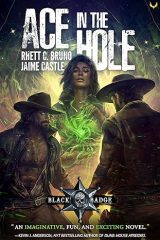 Ace in the Hole
Ace in the Hole Fae’d To Black
Fae’d To Black Fists of Iron: Round One
Fists of Iron: Round One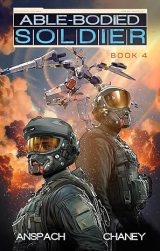 Able-Bodied Soldier #4
Able-Bodied Soldier #4 EngineMasters: Retribution
EngineMasters: Retribution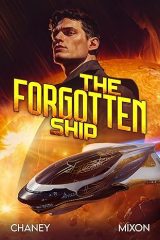 The Forgotten Ship
The Forgotten Ship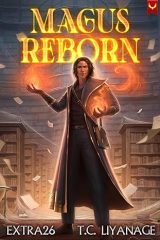 Magus Reborn
Magus Reborn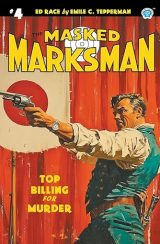 The Masked Marksman #4
The Masked Marksman #4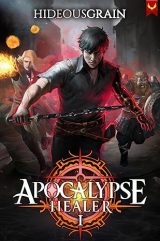 Apocalypse Healer
Apocalypse Healer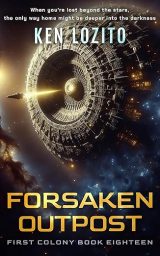 Forsaken Outpost
Forsaken Outpost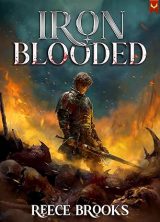 Iron Blooded
Iron Blooded